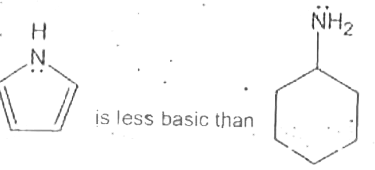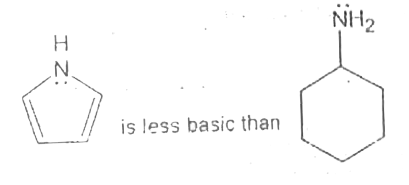Statement-1: Classical smog occurs in cool and humid climate.
and
Statement-2 It is also termed as oxidising smog.
Statement-1: is True, Statement-2 is True, Statement-2 is a correct explanantion for Statement-1
Statement-1 is True, Statement-2 is True, Statement-2 is NOT a correct explanation for Statement-1
Statement:1 is True, Statement -2 is False
Statement-1 is False, Statement-2 is True
The correct Answer is:C
To analyze the given statements, we will break down the information regarding classical smog and evaluate each statement step by step.
1. Understanding Classical Smog:
- Classical smog is a type of air pollution that is typically formed in cool and humid climates. It is characterized by the presence of sulfur dioxide (SO2) and particulate matter, which are primarily produced from the combustion of fossil fuels.
2. Evaluating Statement 1:
- Statement 1: "Classical smog occurs in cool and humid climate."
- This statement is true. Classical smog is indeed associated with cool and humid conditions, which facilitate the formation of this type of smog.
3. Evaluating Statement 2:
- Statement 2: "It is also termed as oxidising smog."
- This statement is false. Classical smog is not referred to as oxidizing smog; instead, it is often referred to as reducing smog. This is because sulfur dioxide (SO2), a major component of classical smog, acts as a reducing agent in chemical reactions.
4. Conclusion:
- Based on the evaluations:
- Statement 1 is true.
- Statement 2 is false.
- Therefore, the correct option is that Statement 1 is true and Statement 2 is false.
Final Answer:
The correct answer is: Statement 1 is true, and Statement 2 is false.
- Classical smog is a type of air pollution that is typically formed in cool and humid climates. It is characterized by the presence of sulfur dioxide (SO2) and particulate matter, which are primarily produced from the combustion of fossil fuels.
- Statement 1: "Classical smog occurs in cool and humid climate."
- This statement is true. Classical smog is indeed associated with cool and humid conditions, which facilitate the formation of this type of smog.
- Statement 2: "It is also termed as oxidising smog."
- This statement is false. Classical smog is not referred to as oxidizing smog; instead, it is often referred to as reducing smog. This is because sulfur dioxide (SO2), a major component of classical smog, acts as a reducing agent in chemical reactions.
- Based on the evaluations:
- Statement 1 is true.
- Statement 2 is false.
- Therefore, the correct option is that Statement 1 is true and Statement 2 is false.
The correct answer is: Statement 1 is true, and Statement 2 is false.
Topper's Solved these Questions
- ENVIRONMENTAL CHEMISTRYBOOK - AAKASH INSTITUTE ENGLISHCHAPTER - ENVIRONMENTAL CHEMISTRYEXERCISE - EXERCISE
10 Videos
- ENVIRONMENTAL CHEMISTRYBOOK - AAKASH INSTITUTE ENGLISHCHAPTER - ENVIRONMENTAL CHEMISTRYEXERCISE - ASSIGNMENT (SECTION-A)
50 Videos
- ENVIRONMENTAL CHEMISTRYBOOK - AAKASH INSTITUTE ENGLISHCHAPTER - ENVIRONMENTAL CHEMISTRYEXERCISE - ASSIGNMENT (SECTION-C) LINKED COMPREHENSION TYPE QUESTIONS
6 Videos
- ELECTROCHEMISTRY BOOK - AAKASH INSTITUTE ENGLISHCHAPTER - ELECTROCHEMISTRY EXERCISE - Assignment (SECTION - J) (Aakash Challengers Questions)
10 Videos
- EQUILIBRIUMBOOK - AAKASH INSTITUTE ENGLISHCHAPTER - EQUILIBRIUMEXERCISE - ASSIGNMENT (SECTION -D)
20 Videos
Similar Questions
Knowledge Check
Assertion : Classical smog is oxidising smog whereas photochemical smog ie reducing smog.
Reason : Classical smog occurs in warm, dry and sunny climate whereas photochemical smog occurs in cool humid climate .AIf both assertion and reason are true and reason is the correct explanation of assertion.BIf both assertion and reason are true but reason is not the c orrect explanation of assertion.CIf assertion is true but reason is false.DIf both assertion and reason are false.Read the given statements and select the correct option.
Statement 1: Glycolysis occurs in mitochondrial matrix.
Statement 2: Krebs' cycle occurs on cristae of mitochondria.ABoth statements 1 and 2 are correctBStatement 1 is correct but statement 2 incorrectCStatement 1 is incorrect but statement 2 is correctDBoth statements 1 and 2 are incorrect.
Statement-1 :IO−3 oxidises I− to I2 in acidic medium.
Statement-2 : HIO3 is formed by oxidation of I2 with concentrated HNO3.
View SolutionStatement-1:The preparation of G.R. occurs in solution phase.
Statement-2: The reaction will be explosive in solid phase. G.R. is
stable only in solution phase.
View SolutionStatement-1 All Arrhenius acids are also Bronsted acids and
Statement-2: All bronsted bases are also Lewis bases.
View SolutionStatement-1: All oxy acid of P are good oxidising agents.
Statement-2: H3PO2 is monobasic.
View SolutionRead the following statements and select the correct option
Statement-1: Annual rings are distinct in plants growing in temperate regions
Statement-2: In temperate regions, the climatic conditions are not uniform through the year.
View SolutionStatement 1: Coupling of aniline with diazonium chloride occurs in slightly acidic medium.
and
Statement 2: Aniline is less basic than aliphatic amines.
View Solution


